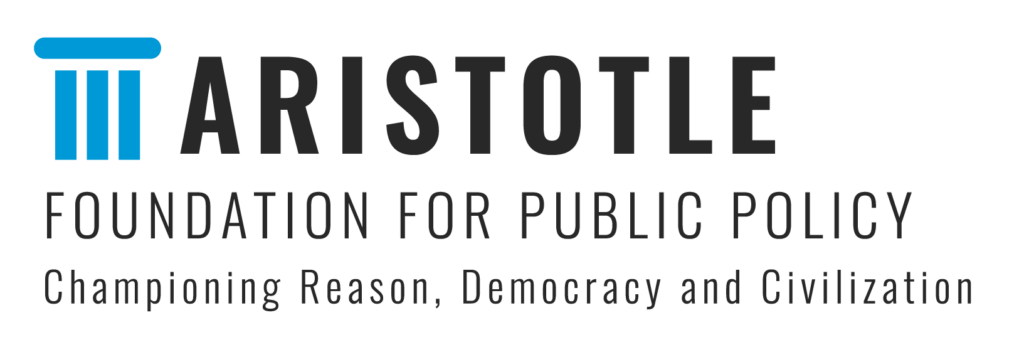
By Mark Milke, Western Standard, March 23, 2022
When Jordan Peterson recently tweeted out a copy of Home Depot’s “white privilege” memorandum given to its staff, it rightly caused a stir: Yet another corporation’s DIE’s (diversity, equity and inclusion) staff parroting a simplistic academic theory.
The memo offered up the usual assumption one’s skin colour explains incomes and opportunities, or not. It includes the claims that if your skin colour is white, you are privileged.
Home Depot’s memo, which originated in its Canadian division, offered the usual disclaimer that this accusation of privilege did not mean those whose palette is pale might not have had a hard life. It is only that “your skin is not one of the reasons that makes it harder.”
Some history: The theory of so-called “white privilege” first began in academic circles in a short 1989 essay from Peggy McIntosh, a professor at Wellesley College in Massachusetts. The essay was not academically rigorous. It was pure opinion devoid of statistical analysis of the sort economists such as Thomas Sowell have engaged in. Instead, in McIntosh’s essay, one evidence of privilege (she listed 26) was that if one could find Band-Aids that were same colour as one’s flesh.
McIntosh’s theory circulated in academia but spread widely in popular culture and corporate messaging after the May 2020 murder of George Floyd by police officer Derek Chauvin in Minneapolis. After that, it became standard practice for corporations, governments and even some journalists (who should be more skeptical about simplistic cause-and-effect claims) to uncritically accept any differences in economic outcomes between cohorts and measured in averages (black and white Americans as one example) must be due to racism. Thus “white privilege” and systemic racism are assumed a real thing even in 2022 in prosperous liberal democracies.
Personal bigotry is not the same as systemic racism
Some definitions here would help: systemic or institutional racism is when institutions discriminate based on race, ethnicity or gender. A problem for the privilege theorists: Canada and other countries in the Anglosphere reformed and moved away from systemic, institutional racism more than half a century ago.
For example, Ontario passed a law in 1951 (the Fair Employment Practices Act) to ban religious and race discrimination in the workplace. In 1954, the province also made it illegal to discriminate in lodging based on religion or race (the Fair Accommodation Practices Act). In 1960, Prime Minister John Diefenbaker and the rest of Parliament restored the right to vote to indigenous Canadians. In the United States, the 1964 Civil Rights Act also attacked institutional racism as did other reforms.
Thus, institutional, systemic discrimination was attacked root and branch — as far back as seven decades ago. These days when people use the term they are often vague. They assert it is “hidden” or they wrongly conflate it with personal prejudice which, while odious, is not the same thing as institutionalized racism. As Brown University economist and social scientist, Prof. Glenn Loury wrote, the “invocation of ‘systemic racism’ in political arguments is both a bluff and a bludgeon.” It allows those who use the term to invoke “shadowy structural causes that are never fully specified,” and ignores how “disparities have multiple, interacting causes, ranging from culture to politics to economics.”
Black American intellectuals vs. privilege theories
Some claim “privilege” exists today because of the lingering effects of past discrimination, or worse, evils such as slavery. However, in an American context, economists such as Thomas Sowell and Walter Williams and other black intellectuals such as Glenn Loury, Shelby Steele, and John McWhorter, have long shredded this presumed cause-and-effect link. They instead note other factors matter to economic outcomes and explain much more than simplistic links to past systemic racism or individual prejudice today: family dynamics (two parents or one parent at home; whether parents read to their children), cultural assumptions, faith practices, and even geography.
The education link to incomes is useful to illustrate. Sowell offered up the example of Washington D.C. schools in 1899 where three were white and one as black. In 1899 — nearly one full generation after slavery, the students in the black school regularly scored higher on standardized tests than students in two of the three white schools. It wasn’t until the 1950s and liberal education reforms that the black scores began to fall.
In other words, the problem with “white privilege” theory is its assumption much or everything in terms of economic outcomes (income, employment and wealth) can be explained by racism, institutional or even personal prejudice. Except the data do not support this claim: Other factors matter, and usually much more even in the cauldron of extreme prejudice that was America in 1899 and to a lesser degree in 1950.
What are key links to income and wealth? Parents, education and even geography
This is why it also matters when 2019 US census data shows only 13% and 23% of Mexican and black Americans have a college degree respectively, but 61% of Korean ancestry do and 79% of Taiwanese Americans do. One would expect the latter two groups to have significantly higher median incomes — which they do.
Or consider the effect of geography as rural areas worldwide show lower incomes than citizens in cities. In Canada, 39% of indigenous Canadians live in communities with fewer than 1,000 people, while only 19% of other Canadians live in such small towns or hamlets. Many of the 39% of indigenous communities are First Nations reserves. Those are often rural and far from additional educational, economic and employment opportunities, to say nothing of the structure of most reserves which are collectivist which thus prevents the accumulation of wealth via property accumulation.
Once you account for such details and compare indigenous and non-indigenous incomes, this too rebuts the systemic racism charge. Positively, the data offers hope that similar choices will result in similar incomes. The 2016 Census data showed that a young indigenous Canadian (age 25-34) with a bachelor’s degree or above who worked full-year, full-time, demonstrated a median employment income of $43,445, which was $99 higher than non-indigenous Canadians with the same characteristics, who earned $43,346. To wit, education levels and geography matter to incomes.
White privilege was real — in 1850
It’s not that white privilege or systemic racism has never existed. A Southern plantation owner in 1850 with slaves obviously benefited from his evil and their forced slave labour. Indigenous Canadians and those of Asian ancestry were real victims of institutionalized prejudice before 1950s and 1960s reforms. But Canada in 2022 is not that the south mid-19th century nor even the nation that wrongly restricted individual liberties based on colour, ethnicity and ancestry before the middle of the last century.
Lastly, the entire artifice of assumed modern privilege including Home Depot’s memo is a parroting of an academic theory that understands neither what leads to incomes and wealth in 2022, nor anything about economies in liberal democracies.
Economies even in more prejudicial eras are not some fixed pie that new arrivals take a piece from. They are instead the equivalent of homes that everyone helps build up brick-by-brick. That includes indigenous arrivals 20,000 years ago, or my grandmother who arrived in Canada in 1927 as a sixteen-year-old fleeing Europe’s destructive cauldron of identity politics, and recent arrivals from every corner of our planet.
How ironic that Home Depot’s Canadian division is now promoting identity politics and this via “privilege” theory which wrongly assumes modern incomes and success as linked to skin colour.
Mark Milke is the president of The Aristotle Foundation for Public Policy. His newest book is The Victim Cult: How the grievance culture hurts everyone and wrecks civilizations.
Like our work? Think more Canadians should see the facts? Please consider making a donation to the Aristotle Foundation.

The logo and text are signs that each alone and in combination are being used as unregistered trademarks owned by the Aristotle Foundation. All rights reserved.
SUBSCRIBE TO OUR NEWSLETTER
SUBSCRIBE TO OUR NEWSLETTER

are signs that are each alone and in combination are being used as unregistered trademarks owned by the Aristotle Foundation. All rights reserved.
SUBSCRIBE TO OUR NEWSLETTER

SUBSCRIBE TO OUR NEWSLETTER
